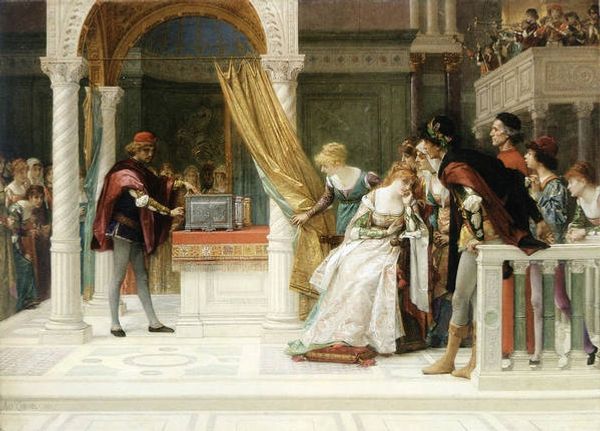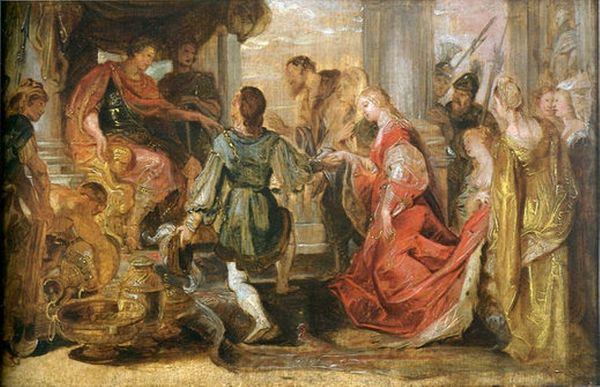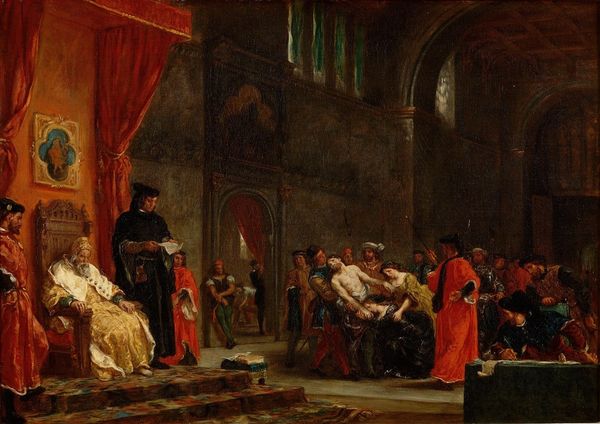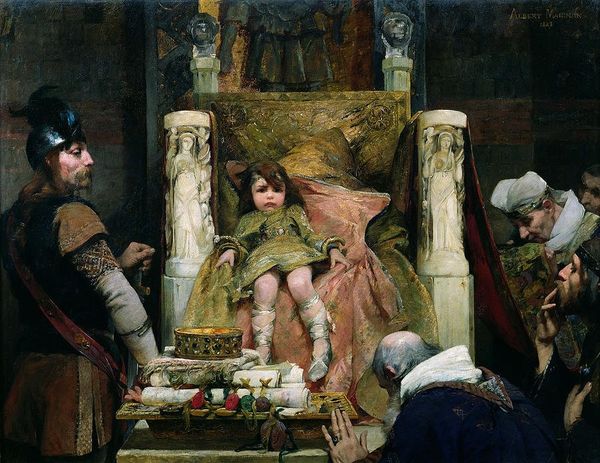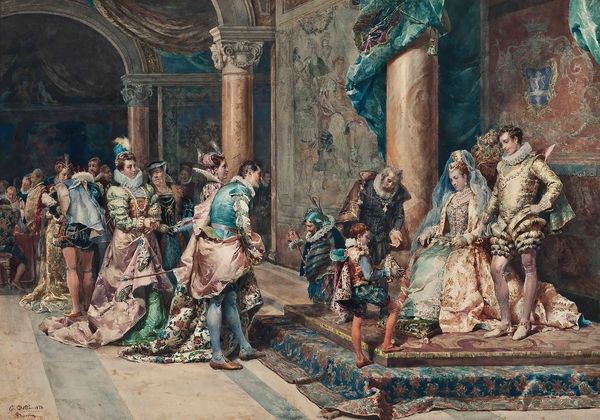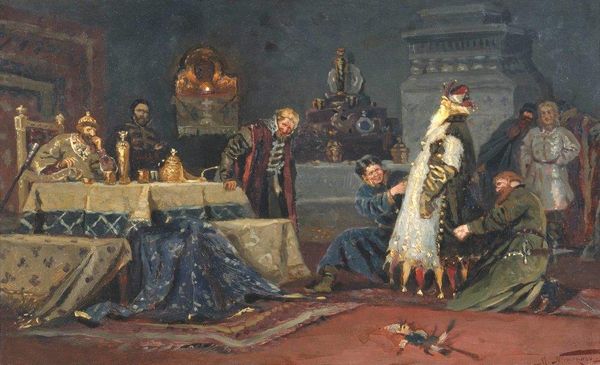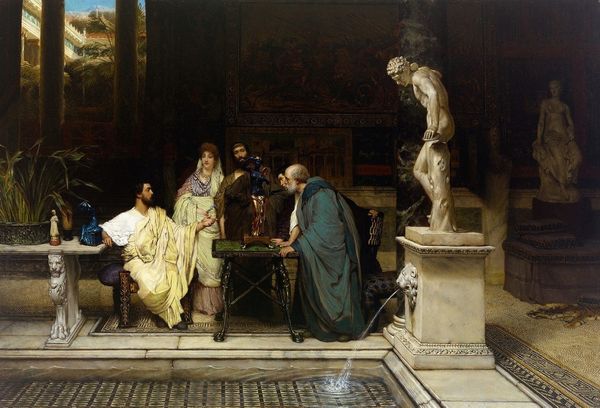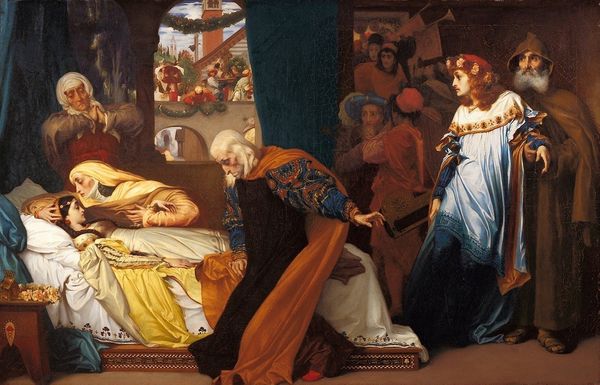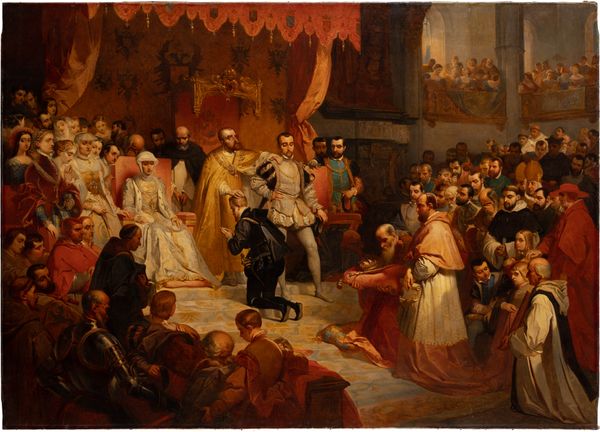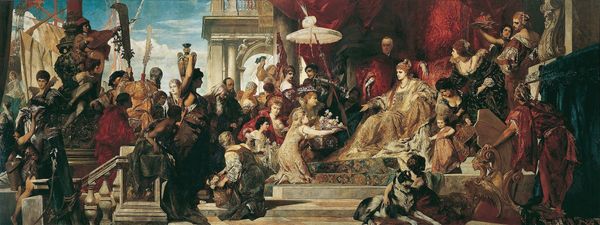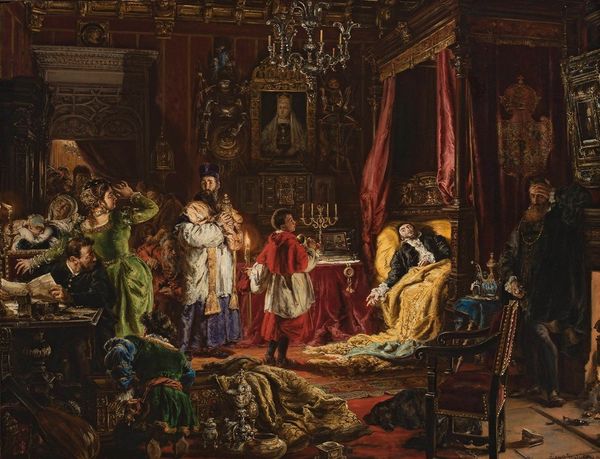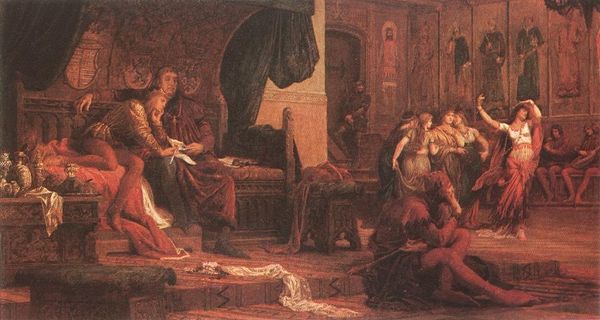
Dimensions: 155 x 236 cm
Copyright: Public domain
Eugene de Blaas's painting 'At the Carnival' presents us with a moment rich in color, texture, and compositional complexity. Painted with oils on a large canvas, the scene is dominated by a tapestry emblazoned with heraldic emblems, draped over a balcony ledge. Notice how de Blaas employs a studied arrangement of figures, creating a visual rhythm across the canvas. The warm tones of the costumes, the intricate patterns of the tapestry, and the cool marble columns create a dialogue between opulence and restraint. Semiotically, each element functions as a signifier of status and spectacle. The very structure of the painting, with its layered composition, encourages a decoding of social codes. De Blaas's painting destabilizes established meanings by embedding a playful, carnivalesque scene within a formal, almost theatrical setting. The textures—from the smooth marble to the rough tapestry—add depth and challenge our understanding of surface versus substance. In the end, the artwork becomes a complex interplay of visual elements. It invites ongoing interpretation of its cultural and philosophical implications.
Comments
No comments
Be the first to comment and join the conversation on the ultimate creative platform.

